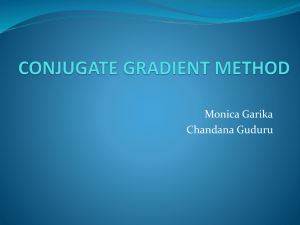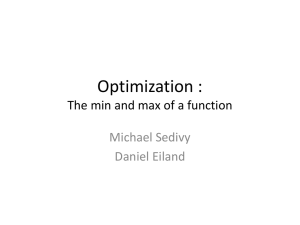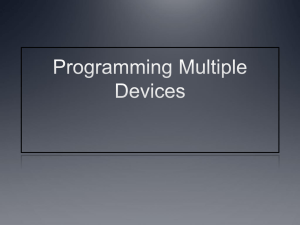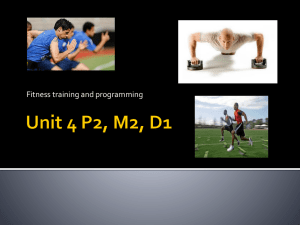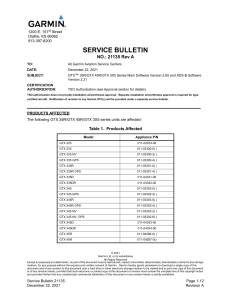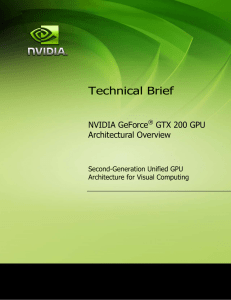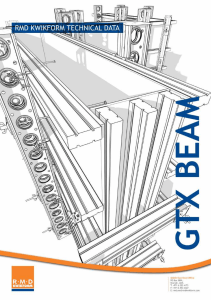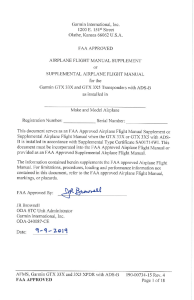ppt - IPDPS
advertisement
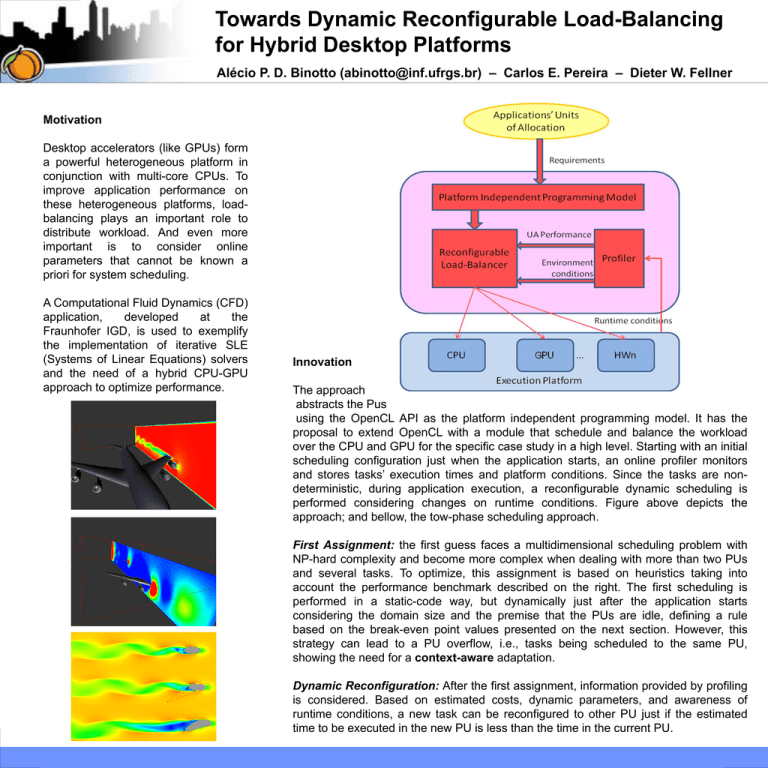
Towards Dynamic Reconfigurable Load-Balancing for Hybrid Desktop Platforms Alécio P. D. Binotto (abinotto@inf.ufrgs.br) – Carlos E. Pereira – Dieter W. Fellner Motivation Desktop accelerators (like GPUs) form a powerful heterogeneous platform in conjunction with multi-core CPUs. To improve application performance on these heterogeneous platforms, loadbalancing plays an important role to distribute workload. And even more important is to consider online parameters that cannot be known a priori for system scheduling. A Computational Fluid Dynamics (CFD) application, developed at the Fraunhofer IGD, is used to exemplify the implementation of iterative SLE (Systems of Linear Equations) solvers and the need of a hybrid CPU-GPU approach to optimize performance. Innovation The approach abstracts the Pus using the OpenCL API as the platform independent programming model. It has the proposal to extend OpenCL with a module that schedule and balance the workload over the CPU and GPU for the specific case study in a high level. Starting with an initial scheduling configuration just when the application starts, an online profiler monitors and stores tasks’ execution times and platform conditions. Since the tasks are nondeterministic, during application execution, a reconfigurable dynamic scheduling is performed considering changes on runtime conditions. Figure above depicts the approach; and bellow, the tow-phase scheduling approach. First Assignment: the first guess faces a multidimensional scheduling problem with NP-hard complexity and become more complex when dealing with more than two PUs and several tasks. To optimize, this assignment is based on heuristics taking into account the performance benchmark described on the right. The first scheduling is performed in a static-code way, but dynamically just after the application starts considering the domain size and the premise that the PUs are idle, defining a rule based on the break-even point values presented on the next section. However, this strategy can lead to a PU overflow, i.e., tasks being scheduled to the same PU, showing the need for a context-aware adaptation. Dynamic Reconfiguration: After the first assignment, information provided by profiling is considered. Based on estimated costs, dynamic parameters, and awareness of runtime conditions, a new task can be reconfigured to other PU just if the estimated time to be executed in the new PU is less than the time in the current PU. 24th IEEE International Parallel and Distributed Processing Symposium PhD Forum 70 Preliminary Results 2500 PCG on CPU 60 Conjugate Gradient on 8800 new Conjugate Gradient on 8800 50 2000 Conjugate Gradient on GTX 285 new 40 30 1500 1000 20 10 500 0 0 2000 4000 6000 8000 10000 12000 0 Unknowns 700 600 Jacobi on GTX 285 Time (ms) 500 Gauss Seidel on GTX 285 400 300 200 100 0 0 1000 2000 3000 4000 5000 6000 7000 8000 9000 Unknowns x 1000 45 40 Time (ms) 35 30 25 20 Conjugate Gradient on GTX 285 15 Jacobi on GTX 285 10 Gauss Seidel on GTX 285 5 0 0 50 100 150 The GPU implementation was made using CUDA and optimized for memory coalescing. Particularly, the figure on the right side, above, compares the CG without and with (new) our strategy for enabling memory coalescing. 200 250 300 Unknowns x 1000 350 400 450 500 2000 3000 4000 5000 6000 7000 8000 9000 600 Single GPU 500 Average two GPUs 400 300 200 Importance This PhD research follows the state-ofthe-art as several scientific applications can now be executed on multi-core desktop platforms. To our knowledge, there is a need for research oriented to support load-balancing over a CPU-GPU (or CPU-accelerators) platform. The work shows its relevance analyzing not just platform characteristics, but also the platform context execution scenario. 50 1000 Unknowns x 1000 The CG was also used for comparing performances using multiple GPUs. There is a need of 2M unknowns for using two GPUs. With less elements, it results on an increasing of communication. The multiGPU approach demonstrates that the speedup depends on the problem size and the achieved speedup was 1.7 for 8M unknowns. Conjugate Gradient on GTX 285 0 Time (ms) The figures bellow show the performance of the solvers on the most powerful used PU, the GTX285 GPU. For a small problem size, GS and Jacobi are faster; and for large problems, it is the CG. On the right, a comparison of the CG over the PUs. For problems till 2K unknowns, the CPU has better performance than GPUs. Conjugate Gradient on GTX 285 Conjugate Gradient on GTX 285 Time (ms) Time (ms) Specially, 3 iterative methods for solving SLEs are analyzed: Jacobi, red-black Gauss-Seidel (GS), Conjugate Gradient (CG). The break-even points over the PUs (quad-core CPU, 8800GT GPU, and GTX285 GPU) used in the first assignment of the scheduling are presented as first results. Conjugate Gradient on 8800 100 0 0 1000 2000 3000 4000 5000 6000 7000 8000 9000 Unknowns x 1000 Conclusions and Remaining Challenges Based on the performance evaluation, it was verified the need of strategies for dynamic scheduling, improving OpenCL. We propose a method for dynamic load-balancing over CPU and GPU, applied to solvers for SLEs. As remaining challenges, to develop the load-balance reconfiguration phase on the presented case study; and to analyze the performance of the application without the proposed method to evaluate the strategy overhead. Acknowledgments Thanks for Daniel Weber and Christian Daniel for their support. A. Binotto thanks the support given by DAAD and Alßan, scholarship no. E07D402961BR.
